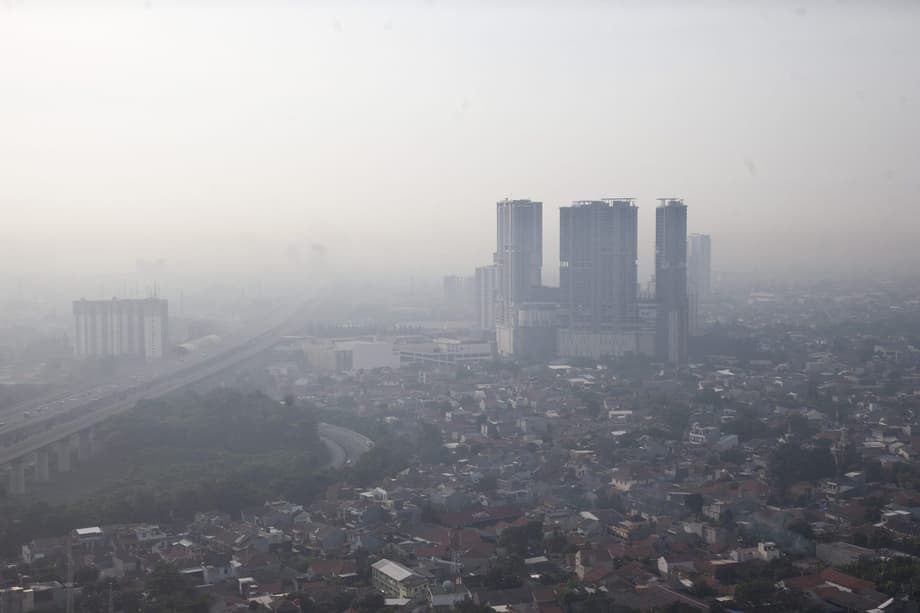Why a cleaner region could still see more deaths
A major new analysis published in a leading environmental health journal projects that deaths linked to air pollution in Southeast Asia could rise by up to 10 percent by 2050. The study, led by Steve Yim of Nanyang Technological University in Singapore, estimates that the economic value of those lost lives ranges from about 447 billion dollars under a low emissions pathway to about 591 billion dollars under a high emissions pathway. These figures represent the social value of lost life and productivity, not hospital bills or public health budgets. They reflect the broad welfare loss to families, workplaces, and economies when people die earlier than they otherwise would.
- Why a cleaner region could still see more deaths
- What the estimates actually measure
- Where the pollution comes from and why haze keeps returning
- The hidden health burden across the region
- Climate change is shifting the air we breathe
- What inaction costs and why action pays off
- What governments are doing now
- What would bend the curve
- How communities can reduce risk today
- The Bottom Line
The headline finding appears counterintuitive. The same study projects that average concentrations of fine particulate matter (PM2.5) across Southeast Asia could fall by 2 to 10 percent by mid century. Yet mortality may still climb. Researchers point to where pollution is getting worse and who is exposed. The most climate vulnerable parts of the region, including southern Thailand and Indonesia’s southern islands, are expected to see higher pollutant levels and more frequent severe events. People living and working in these hotspots face repeated exposure to harmful air at levels that overwhelm regional averages.
The health stakes are clear. More than 90 percent of the 2.5 billion people living in East and Southeast Asia breathe air that exceeds World Health Organization guidelines for PM2.5 and ground level ozone. Exposure to these pollutants raises the risk of ischemic heart disease, stroke, lung cancer, and chronic obstructive pulmonary disease. Air pollution harms nearly every organ system. It also reduces labor productivity and household income, which is why economists treat cleaner air as both a public health and a growth issue.
What the estimates actually measure
The projected 447 to 591 billion dollar range is based on a common economic method that values the reduction in mortality risk across society. It captures lost output, diminished productivity, and the intangible cost of premature death. It does not equal an estimate of hospital spending or national health accounts. In practical terms, it is a measure of what residents, employers, and governments implicitly forfeit when air pollution cuts lives short.
The study modeled three emissions pathways shaped by policy choices in energy, transport, land use, and industrial activity. Even under the pathway where emissions fall faster, the region still faces very large welfare losses because vulnerable communities remain exposed to intense episodes, and because each additional year of exposure adds to disease risk for many people.
Context from other assessments reinforces the scale of the challenge. A World Bank assessment found that Central, South, and Southeast Asia together lost as much as 11 percent of 2019 gross domestic product when the welfare cost of PM2.5 exposure is considered. That loss does not mean output literally vanished. It means the value of lives cut short and years of healthy life lost is comparable to a large share of what those economies produce.
Where the pollution comes from and why haze keeps returning
Southeast Asia’s pollution sources are diverse. Vehicles and diesel engines, coal and other fossil fuel power plants, factories and construction sites, shipping corridors, and household fuels remain major contributors in cities. Outside cities, seasonal burning of crop residues, forest clearing, and peatland fires can blanket entire subregions in smoke. That haze crosses borders, disrupts transport and tourism, and sends respiratory cases surging in clinics. It also damages forests, fisheries, and wildlife habitat.
The economic footprint of severe haze years is large. In 2015, Indonesia’s fires cost an amount equal to 1.9 percent of its gross domestic product, and immediate losses reached 221 trillion rupiah. Estimates for multiple major fire events between 2004 and 2015 add up to tens of billions of dollars. Those episodes show how quickly air quality can collapse when drought, land clearing, and peat ignition align, even if typical daily pollution appears to improve in quieter years.
Science also explains why haze years are so damaging. Research in Upper Southeast Asia shows that volatile organic compounds rise sharply during smoke seasons and turbocharge the chemistry that forms both ozone and secondary particles. During smoke haze periods, the potential to form ozone and organic aerosols can be several times higher than in pre haze periods. This is one reason why a short season of burning can erase months of incremental progress in urban emission control.
The hidden health burden across the region
Fine particles and ground level ozone are the two pollutants most closely tied to premature death. PM2.5 penetrates deep into the lungs, moves into the bloodstream, and contributes to cardiovascular disease. Ozone, formed when nitrogen oxides and volatile organic compounds react in sunlight, irritates the airways and reduces lung function. In the region’s most polluted cities, these exposures add up to a persistent health burden each year. Analyses of 2020 data, a year with uneven lockdown driven changes in emissions, still found large death tolls and substantial economic losses in megacities.
Evidence from Southeast Asia underscores specific disease pathways. A multi country study linked higher PM2.5 and carbon dioxide emissions to higher lung cancer risks between 2000 and 2016. It also found that more renewable energy use and higher health spending per person were associated with lower lung cancer prevalence. The authors urge governments to shift subsidies from fossil fuels to clean energy, and to consider carbon taxes, especially in power generation, because the long term health and productivity gains outweigh short term growth from cheap fossil fuels.
Vulnerability is not evenly distributed. Children are more sensitive to air pollution, and household exposure can intersect with ambient air exposure in many communities. New initiatives are trying to close data gaps. In Lao PDR, an open source project supported by UNICEF and national partners is building a real time machine learning model that estimates air quality for every village using low cost sensors and open data. The goal is to help schools, clinics, and local officials make timely decisions that protect children and keep learning on track during high pollution days. Workers with outdoor jobs face additional risks, which is why researchers call for occupational exposure rules, better protective equipment, and cleaner technologies at worksites.
Climate change is shifting the air we breathe
Changing weather patterns are altering how pollution forms, spreads, and clears. Reduced rainfall in dry seasons limits the natural cleaning of the air, so particles and ozone build up for longer. Hotter days accelerate the chemistry that produces ozone. Drier landscapes make it easier for fires to start and harder to extinguish them. El Nino years often bring longer, hotter dry seasons to parts of Southeast Asia, and that tends to intensify smoke episodes. These shifts help explain why mortality can rise even as annual average PM2.5 inches down in some places. The average improves, but the worst days become more frequent or more intense in vulnerable areas.
Climate and air quality policies can work together. Cut black carbon and methane, and you reduce both warming and local health risks. Prevent peatland drainage and manage agricultural residues without burning, and you avoid large smoke events while keeping carbon in the ground. Energy choices that replace coal with renewables, improve grid efficiency, and electrify transport reduce both greenhouse gases and harmful pollutants.
What inaction costs and why action pays off
Air pollution does not just strain hospitals. It reduces work hours, raises absenteeism, and lowers productivity in factories, farms, and offices. It affects test scores, cognitive performance, and tourism demand. City snapshots from 2020 showed how stark these losses can be. Delhi’s air pollution was associated with tens of thousands of premature deaths that year. Jakarta logged thousands of avoidable deaths and billions in economic losses. Tokyo’s total financial toll reached into the tens of billions of dollars. These city level numbers cannot be added up to a regional total, but they illustrate the scale at which poor air quality undermines prosperity.
The cost of inaction in whole countries is also high. Regional assessments indicate that Cambodia, Indonesia, and Thailand could save hundreds of thousands of lives and tens of billions of dollars in health costs by 2030 with stronger air quality policies. One estimate for Thailand put the annual cost of a clean air strategy at around 4 billion dollars by 2030, while the cost of inaction would be about three times higher. Agriculture is part of this calculation. Tropospheric ozone can cut yields of rice, wheat, maize, and soy by 5 to 20 percent, a serious risk in a region that already faces food security pressures.
The choice is not between growth and clean air. Renewable energy and energy efficiency are now cost competitive in many markets. Cleaner transport reduces congestion and improves access to jobs. In cities that implemented targeted clean air programs, returns on investment often far exceed upfront costs because fewer people fall sick, families miss fewer workdays, and businesses face fewer disruptions.
What governments are doing now
Several Southeast Asian governments have taken steps to strengthen air quality policy. Singapore created a national advisory committee on ambient air quality to align targets with science based guidelines. In Indonesia, a landmark court decision in 2019 ordered stronger national and regional standards as part of a response to citizen lawsuits. Regionally, governments are working toward the ASEAN Power Grid to integrate cleaner energy across borders and to boost reliability. These efforts sit alongside long running cooperation to reduce transboundary haze, including the ASEAN Agreement on Transboundary Haze Pollution, the Haze Free Roadmap, and the new ASEAN Coordinating Centre for Transboundary Haze Pollution Control. The region has expanded peatland strategies, investment frameworks for sustainable land management, and shared early warning systems, although gaps remain in enforcement and data transparency.
What would bend the curve
Decisive action across sectors can reduce deaths, improve economic resilience, and cut climate warming at the same time. A science based set of measures for Asia and the Pacific identifies emissions controls and development policies that could bring safer air to hundreds of millions of people by 2030 if widely adopted.
Energy and industry
Replacing coal with wind, solar, and modern gas plants where needed can reduce PM2.5, sulfur dioxide, nitrogen oxides, and carbon dioxide. Cleaner fuels and tighter emission standards in industrial boilers, kilns, and furnaces reduce local pollution quickly. Shifting public money from fossil fuel subsidies to targeted support for clean power and energy efficiency accelerates the transition, and evidence suggests benefits to public health and long run growth. Carbon pricing in the power sector can steer private capital toward cleaner options when designed well.
Transport and urban planning
Strengthening vehicle emission standards, phasing in electric buses and two wheelers, and improving public transport have outsized health payoffs. Road dust control, better inspection regimes, and clean construction practices cut urban particle spikes. Cities can adopt low emission zones and traffic demand management to curb the dirtiest trips. Cleaner shipping fuels and port electrification reduce hotspots near harbors.
Land use and haze prevention
Ending open burning of crop residues and enforcing zero burning policies on peatlands are central to preventing the worst smoke episodes. Practical alternatives exist, including residue collection for bioenergy or compost, and mechanized clearing. Investments in peatland rewetting and community fire management lower ignition risk. Stronger transparency on land concessions and supply chain accountability makes it harder for illegal burning to persist.
Waste and household energy
Stopping open trash burning and expanding waste collection and recycling reduce a persistent source of toxic smoke. Clean cooking fuels and technologies in homes cut indoor exposure while reducing ambient pollution in dense neighborhoods. Programs that replace inefficient stoves and promote clean fuels protect women, children, and the elderly who spend more time near household sources.
Data, early warning, and accountability
Dense monitoring networks, satellite data, and open platforms allow officials to target interventions and warn the public during high pollution days. Low cost sensors, combined with machine learning, can fill gaps in rural areas and small towns, as pilots in Lao PDR demonstrate. Real time cost estimators that translate PM2.5 into health and economic metrics help decision makers weigh trade offs. Regional data sharing and joint response protocols limit transboundary fallout. Workplace exposure standards and protective equipment rules guard workers whose jobs keep them outdoors.
How communities can reduce risk today
Even as policies tighten, practical steps can lower exposure. Public agencies can issue clear school and workplace guidance for high pollution days, including moving activities indoors, masking with certified respirators, and using portable air cleaners in classrooms and clinics. Hospitals can adjust staffing when forecasts predict spikes. Farmers can access support to shift away from burning residues. City residents can check local air quality indices, plan commutes around peak pollution hours, and use cleaner transport options where available. These choices are most effective when paired with strong national standards and regional cooperation that address the sources of dirty air.
The Bottom Line
- Air pollution deaths in Southeast Asia could rise by up to 10 percent by 2050, with social welfare losses between 447 and 591 billion dollars depending on emissions.
- Average PM2.5 may fall modestly, but more intense pollution in climate vulnerable hotspots drives higher mortality risk.
- Haze from land and peat fires remains a major regional driver, with severe years causing multibillion dollar losses.
- PM2.5 and ozone drive heart and lung disease; children, outdoor workers, and residents near burning or traffic corridors face higher exposure.
- Climate trends that reduce rainfall and increase heat intensify ozone formation and lengthen pollution episodes.
- Economic losses come through early deaths, lower productivity, health care strain, and crop yield damage.
- Solutions exist: clean power, cleaner transport, zero burning land practices, waste controls, and stronger monitoring and early warning.
- Regional cooperation is advancing through ASEAN frameworks and an emerging power grid, but enforcement and transparency remain critical.




